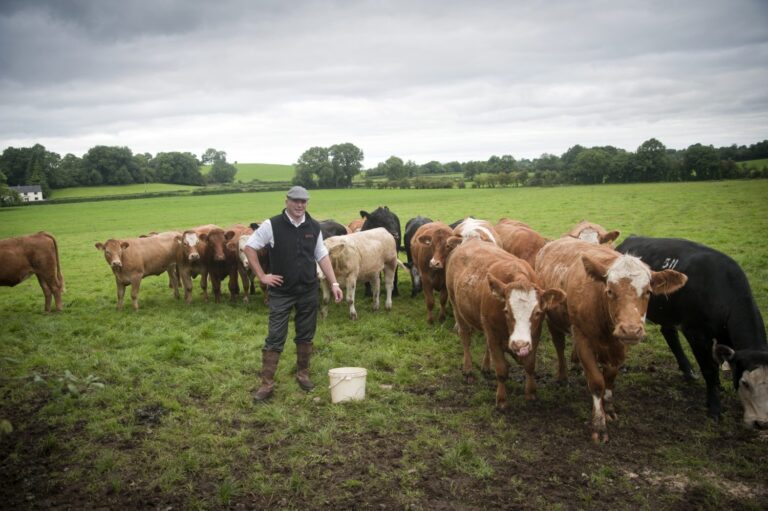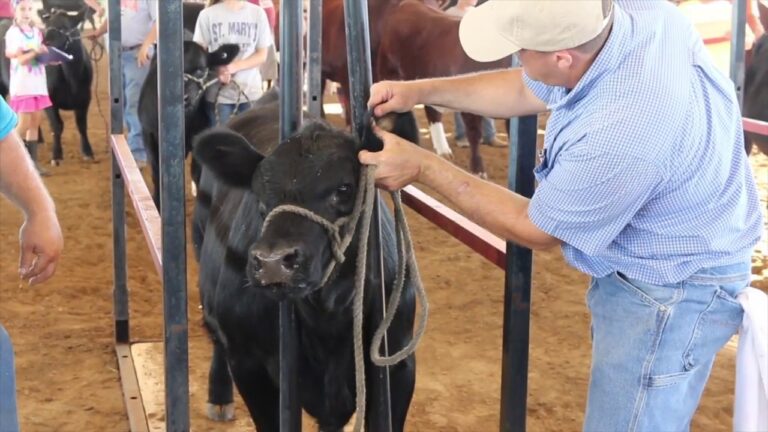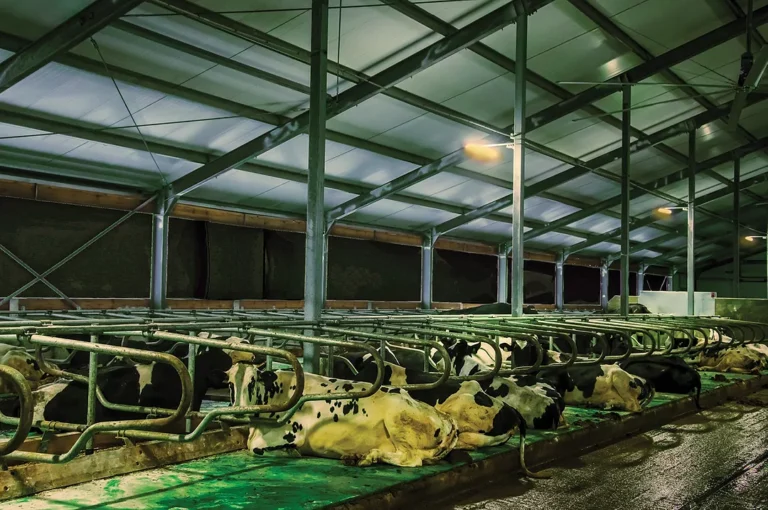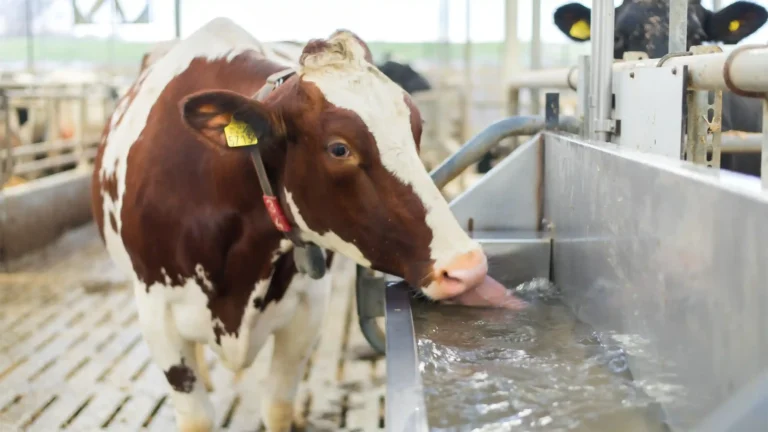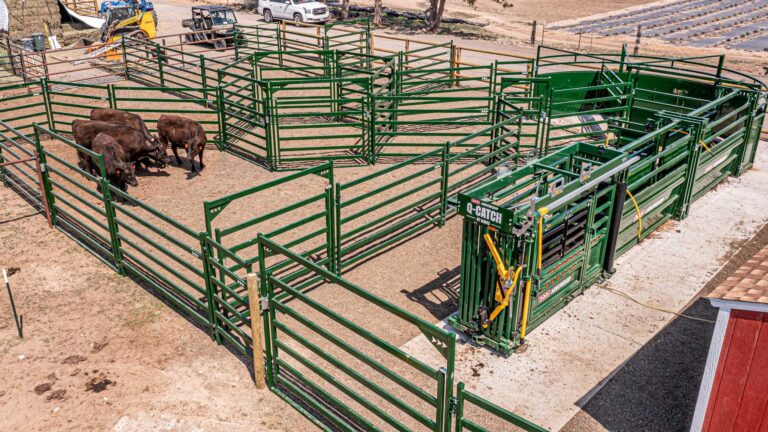Cattle identification is the process of assigning unique markers to individual animals to track their health, ownership, and productivity. Effective identification methods help streamline farm operations and ensure compliance with regulations.
This comprehensive guide explores the most common cattle identification methods, their benefits, challenges, and best practices. With the knowledge of these options, you’ll be equipped to select a system that suits your farm’s needs and meets global traceability standards.
Why You Need Cattle Identification
Effective cattle identification is the backbone of modern livestock management. It enables farmers to monitor individual animal health, track breeding records, and comply with regulations set by bodies like the USDA or the Canadian Food Inspection Agency (CFIA).
It has helped severally in the prevention of wider spread of diseases among cattle. During a 2018 disease outbreak in my region, ear tags helped local veterinarians trace infected cattle back to their source, preventing a wider spread of bovine tuberculosis.
Identification also supports market access, as many countries require traceability for beef and dairy exports, per WOAH guidelines. Without a reliable system, you risk losing valuable data, facing regulatory fines, or struggling to prove ownership during disputes.
Choosing the right method ensures your farm operates smoothly while meeting industry standards.
Common Cattle Identification Methods
Ear Tags
Ear tags are the most widely used cattle identification method due to their affordability, visibility, and ease of application. As a farmer, I’ve relied on plastic ear tags for years to track my Angus herd. These tags, typically made of durable polyurethane, display a unique number or barcode and are applied using a tagging gun.
According to the USDA’s Animal Identification Management System, over 80% of U.S. cattle producers use ear tags for their simplicity and compliance with national programs.
Tags come in various colors and sizes, allowing farmers to customize them for visual identification or to indicate specific traits, like vaccination status.
However, ear tags have drawbacks. They can tear out, fade, or become illegible over time, especially in harsh climates. In my experience, losing a tag during a stormy season meant re-tagging several cows, which was time-consuming. To mitigate this, I recommend using high-quality tags from reputable manufacturers and regularly inspecting them.
For beginners, ear tags are an excellent starting point due to their low cost—typically $1–$3 per tag—and ease of use.
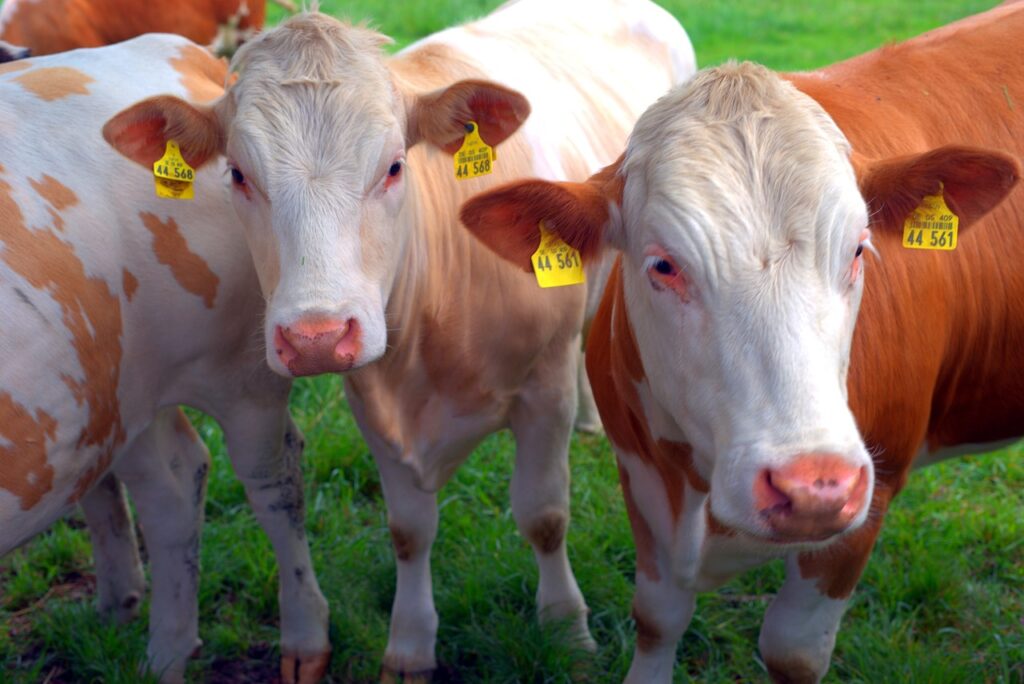
Tattoos
Tattooing is a permanent cattle identification method that involves inking a unique number or symbol into the animal’s ear or skin. I’ve used tattoos on my dairy herd to ensure lifelong identification, especially for registered Holsteins.
The process requires a tattoo gun, ink, and a steady hand to imprint numbers into the ear’s inner skin. This method is highly reliable for pedigree records and is often required by breed associations. Tattoos are also cost-effective, with equipment costing $50–$100 and ink lasting for hundreds of applications.
The challenge with tattoos is their lack of visibility from a distance, making them less practical for daily management. They also require training to apply correctly, as smudged tattoos can be unreadable. In my early years, I botched a few tattoos before mastering the technique, so I advise beginners to practice on a piece of leather first.
Tattoos are best for farms prioritizing permanent records over quick visual identification.
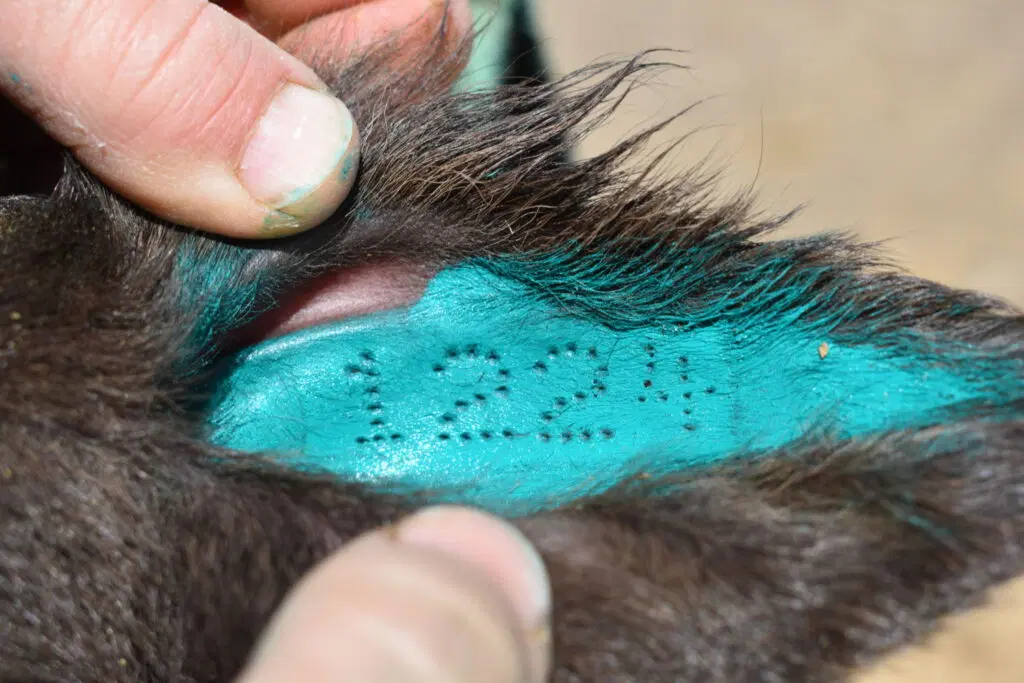
Electronic Identification (EID)
Electronic identification, often using Radio Frequency Identification (RFID) tags, is gaining traction for its precision and integration with digital farm management systems. RFID tags, small transponders embedded in ear tags or boluses, store data readable by scanners.
The Australian Department of Agriculture, Fisheries and Forestry reports that RFID systems are mandatory for cattle in Australia to ensure export traceability. On my farm, I’ve experimented with RFID tags to track feed efficiency, syncing data to software for real-time insights. These systems are ideal for large operations, as they reduce human error and streamline record-keeping.
The downside is cost—RFID tags range from $2–$5 each, and scanners can cost $200–$1,000. Connectivity issues in remote areas can also limit their effectiveness.
For intermediate farmers with tech-savvy operations, EID is a game-changer, but small-scale farmers may find the investment steep. EID is a forward-thinking choice, especially as it enhances global disease surveillance.
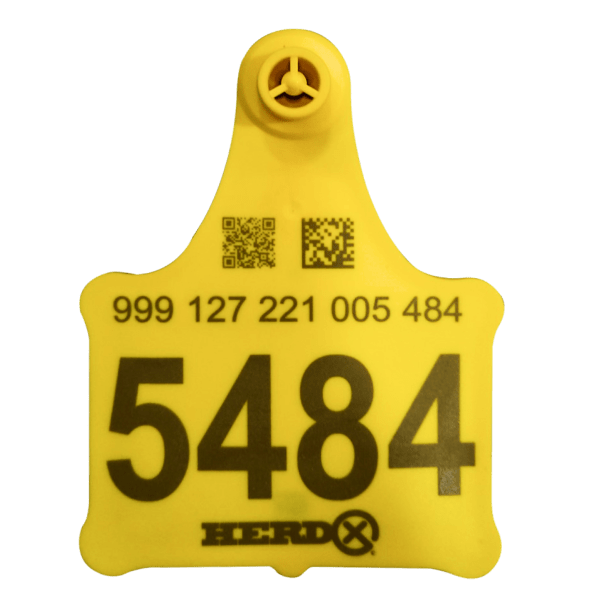
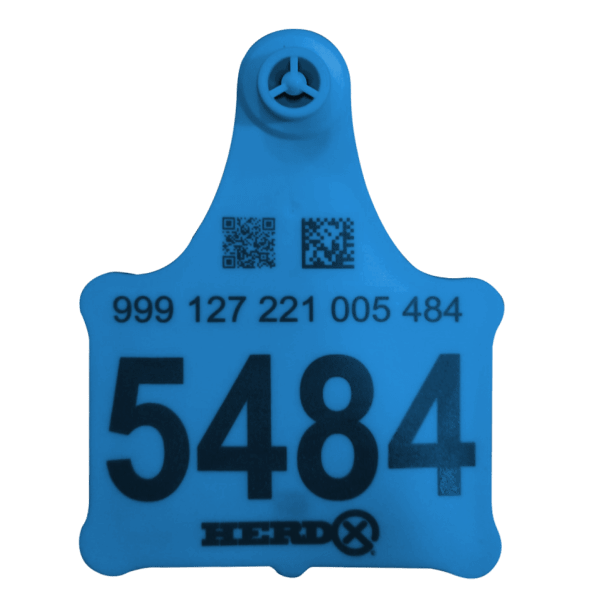
Branding
Hot or freeze branding involves marking cattle with a heated or super-cooled iron to create a permanent scar on the hide. Branding is still used in some Western U.S. states, but its popularity is waning due to animal welfare concerns.
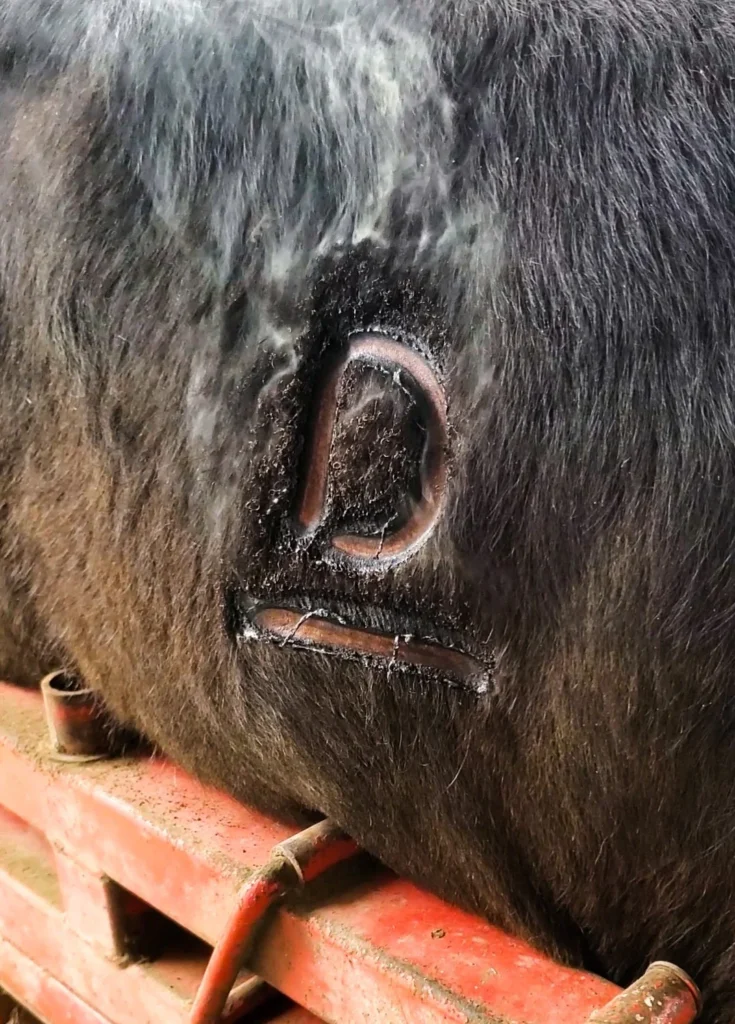
Brands are highly visible and theft-resistant but require skilled application to avoid excessive tissue damage. They also don’t provide detailed data like tags or tattoos.
Branding’s decline stems from its invasiveness and the availability of less stressful alternatives. Freeze branding, which uses liquid nitrogen to create white hair patterns, is less painful but still requires specialized equipment costing $500 or more.
For farmers in regions where theft is a concern, branding may still have a place, but I recommend combining it with other methods for comprehensive tracking.
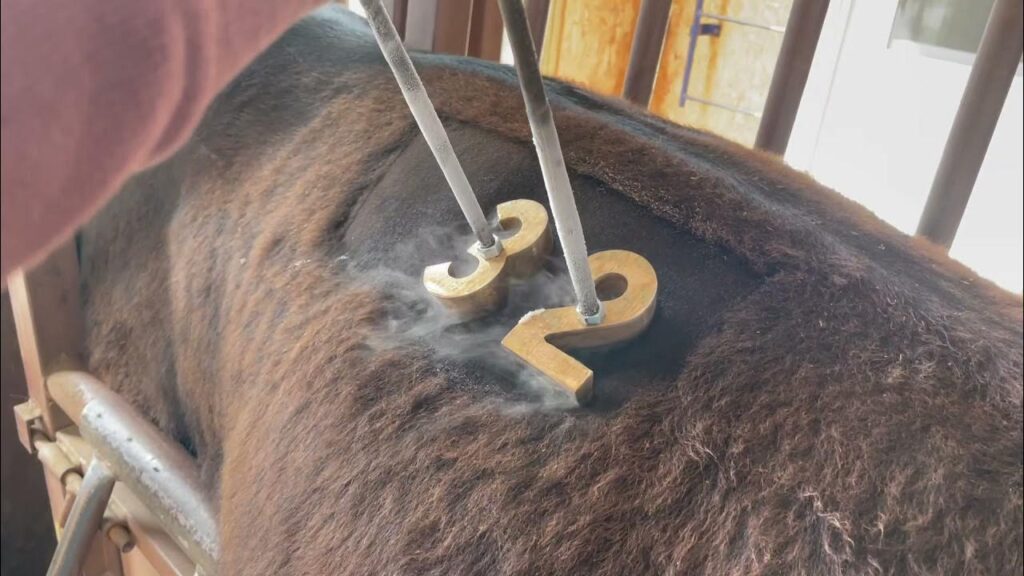
Other Methods: Boluses, Microchips, and More
Less common methods include reticular boluses, microchips, and nose prints. Reticular boluses, small ceramic devices swallowed by cattle, lodge in the stomach and are readable by scanners. They are used in high-value dairy herds for lifelong identification.
Microchips, injected under the skin, are rare in cattle but used in some countries for high-security tracking.
Nose prints, unique like fingerprints, are labor-intensive and uncommon but recognized by some breed registries.
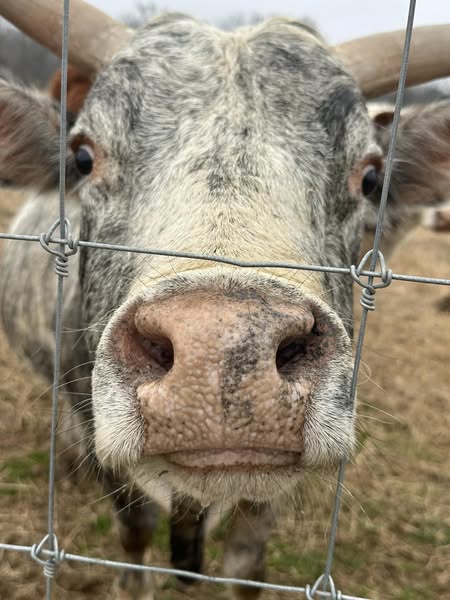
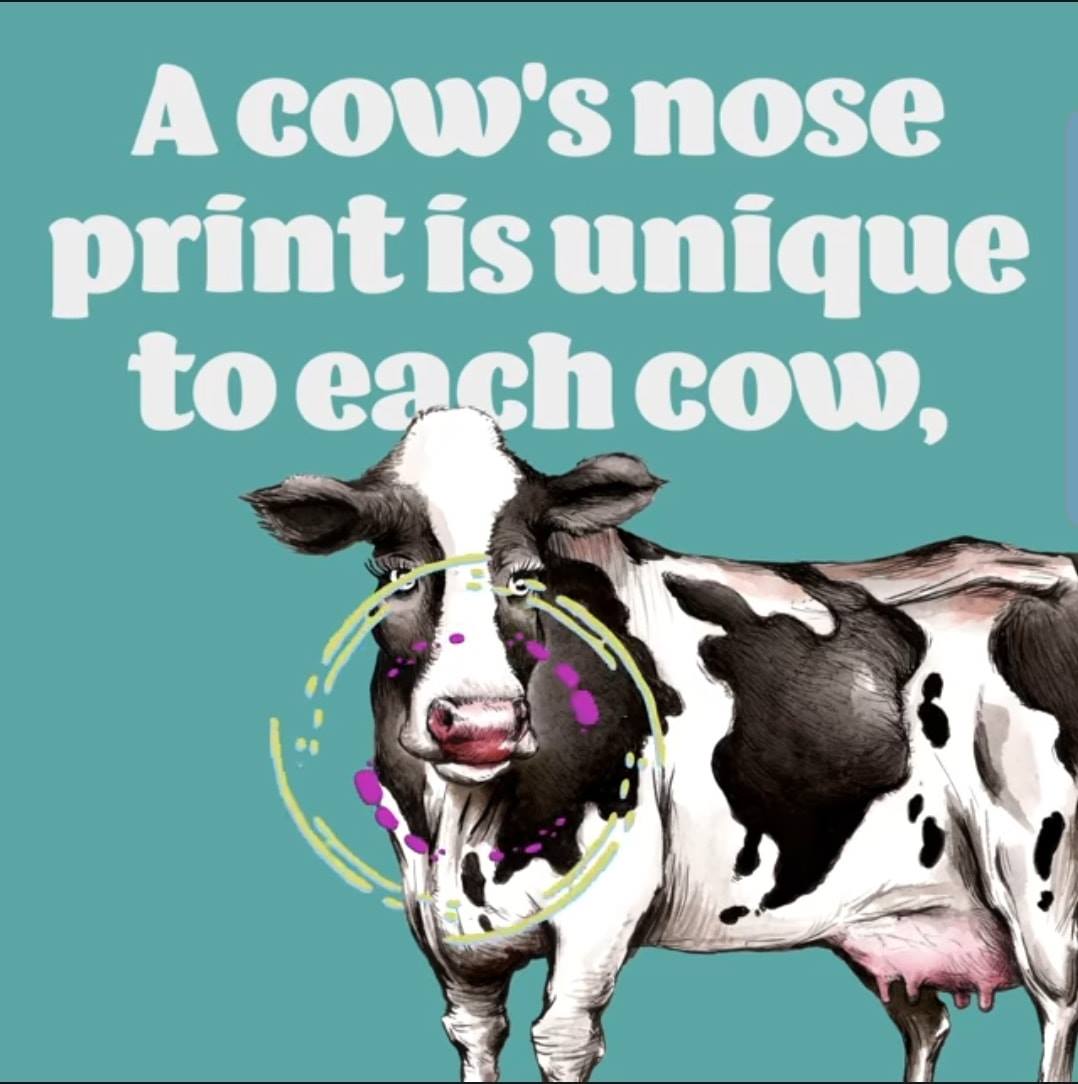
These methods are niche due to cost or complexity. Boluses cost $5–$10 each, and microchips require specialized readers. In my experience, these are overkill for small farms but useful for high-tech operations or research settings.
Always check local regulations, as some countries mandate specific methods.
Factors to Consider When Choosing a Method
Selecting a cattle identification method depends on your farm’s goals, budget, and regulatory requirements.
Small-scale farmers like me, managing 50 head, often stick to ear tags for their affordability and simplicity. Larger operations may invest in RFID for data-driven insights, as seen in Australian feedlots. Consider your herd size, labor availability, and whether you prioritize permanence (tattoos, brands) or visibility (tags).
Regulatory compliance is critical. CFIA requires RFID for Canadian cattle exports, while UK DEFRA mandates ear tags with specific formats. Always align your choice with local laws and market demands.
Best Practices for Implementing Cattle Identification
Proper implementation ensures your identification system is effective and durable.
First, invest in quality equipment; cheap tags or poorly applied tattoos lead to losses.
Second, train staff thoroughly; I’ve seen mishandled tagging cause ear infections, costing time and money.
Third, maintain detailed records, linking identification numbers to health and breeding data. The USDA’s Animal Disease Traceability program emphasizes record-keeping for rapid outbreak response.
Finally, inspect and replace damaged identifiers regularly. On my farm, I check tags bi-annually to avoid gaps in tracking.
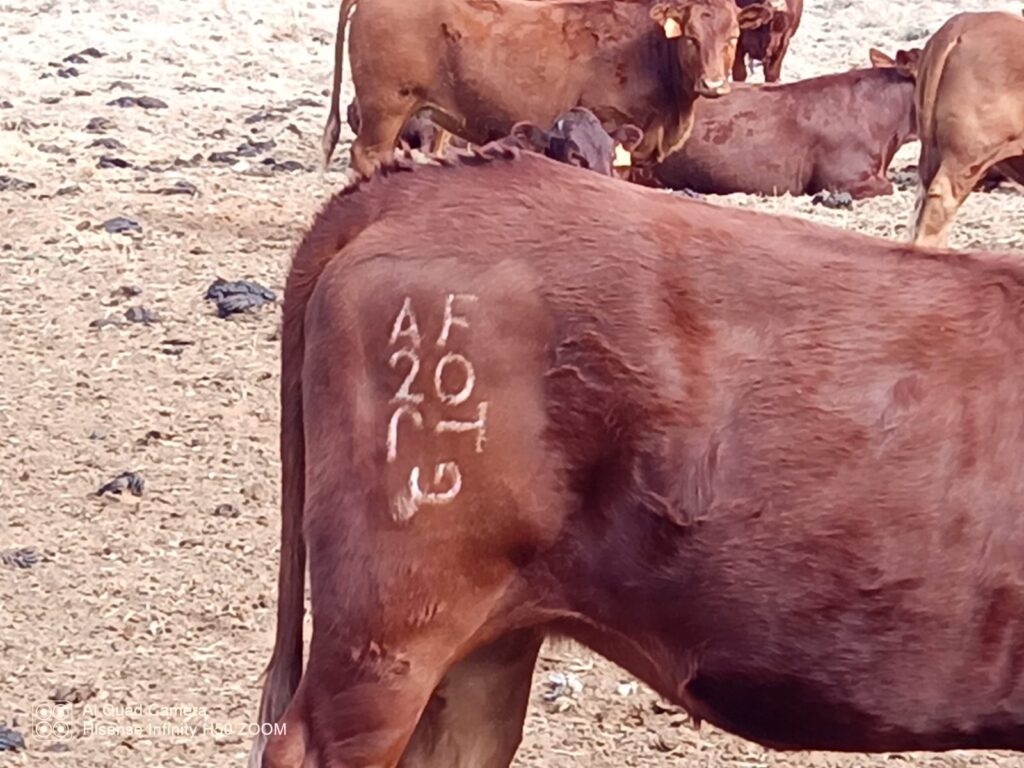
Challenges and Solutions
Common challenges include tag loss, tattoo fading, and technology failures.
To combat tag loss, use tamper-proof designs and check tags during routine handling.
Tattoos require high-contrast ink and clean application to remain legible; green ink works best in my experience.
For EID, ensure backup systems like visual tags in case scanners fail. Regular maintenance and cross-referencing with paper or digital records minimize these issues.
Global Perspectives on Cattle Identification
Cattle identification practices vary globally. In Australia, the National Livestock Identification System (NLIS) mandates RFID tags for all cattle, ensuring traceability from farm to slaughter.
In contrast, smallholder farmers in East Africa often rely on visual tags or brands due to cost constraints, as noted in WOAH reports.
In the U.S., the USDA’s voluntary identification programs encourage RFID but allow flexibility for smaller farms.
Understanding your region’s standards is crucial, especially for export markets.
Wrapping Up
Choosing the right cattle identification method depends on your farm’s size, goals, and regulatory environment. As a farmer, I’ve found that combining methods, like tags for visibility and tattoos for permanence, offers the best of both worlds.
Invest in quality tools, train your team, and stay informed about local regulations to make cattle identification a cornerstone of your farm’s success.
FAQ: Cattle Identification Methods
What is cattle identification?
Cattle identification involves assigning unique markers, like ear tags or tattoos, to track individual animals’ health, ownership, and productivity, ensuring compliance with regulations and efficient farm management.
Which cattle identification method is the most cost-effective?
Ear tags are the most cost-effective, typically costing $1–$3 per tag. They’re easy to apply and visible, making them ideal for small-scale farmers, though they may require periodic replacement.
Are RFID tags mandatory for cattle?
RFID tags are mandatory in some countries, like Australia (NLIS), and for Canadian cattle exports (CFIA). In the U.S., RFID is voluntary but encouraged under USDA’s traceability programs.
How long do cattle tattoos last?
Cattle tattoos are permanent, lasting the animal’s lifetime if applied correctly with high-quality ink. Regular inspection ensures legibility, as fading can occur in harsh conditions.
Can branding be used with other identification methods?
Yes, branding can complement ear tags or tattoos for added security, especially in regions prone to theft. Combining methods enhances traceability and meets diverse farm needs.
Related:

